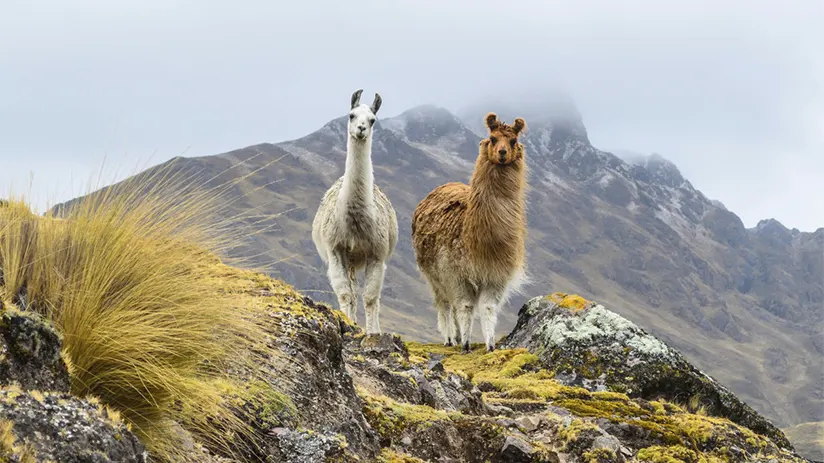Peru has not only some of the best mountain landscapes in the world. But also, the biodiversity living there is unbelievable. Can you believe close relatives of the famous Sahara desert camel (Africa) live in another distant continent like South America? The Peruvian Andes host 4 relatives of the famous Egyptian camel: the llamas, the vicunas, the alpacas, and the guanacos. Among them, alpacas and llamas are very popular. For this reason, with the experts from Machu Travel Peru, we have prepared a small article about the difference between llamas vs alpacas. And let yourself be surprised by these fantastic animals, similar at first sight!
All you need to know about the alpacas and llamas in Peru
The llama
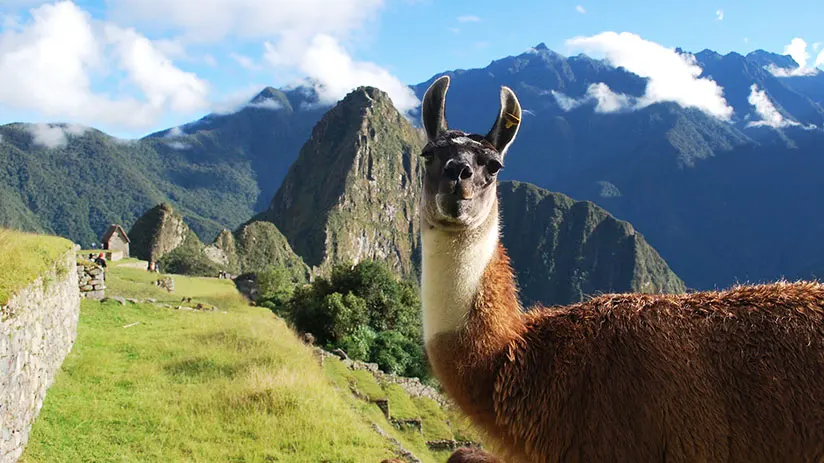
Before knowing the difference between these quaint animals, it is necessary to know what a llama or an alpaca is. We’ll begin by saying that the llamas are domesticated South American camelids from the mountainous areas of the Andes. They are big, strong, and have thick wool. Usually, they were used as guard animals for other farm animals like guinea pigs (cuy), alpacas, and Vicunas, among others. Besides being used as pack animals (due to their strength). For these reasons, they are more moody with humans.
Note apart is the use of its wool to make winter clothes. Also, these animals are in every corner of the Historical Center of Cusco. They keep company with Cusco women, who are dressed in typical Andean clothing. These women with their llamas wander by the Cusco center street and offer to pose for the spirited cameras of tourists. Of course, you will listen to the famous phrase: “One picture, one dollar.”
The alpaca
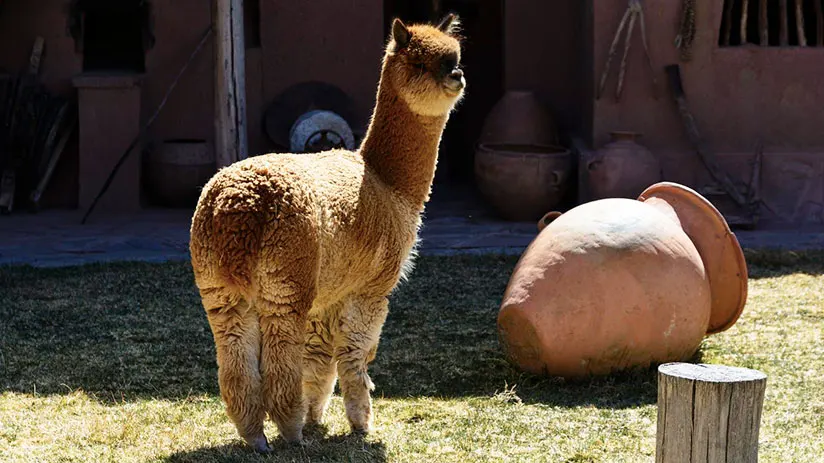
On the other hand, we have the alpacas. These are the domesticated versions of a vicuña, another ruminant animal native to the Andean regions. The alpacas are smaller and finer than the llamas. For this reason, they are not used as animal packs. Also, they are very comfortable with humans around them and have truly warm and affectionate personalities. Therefore, they live domesticated by humans, and you won’t find them in the wild. This is why many end up raising them as pets.
Moreover, its wool fibers are incomparable and much better than the llamas. However, these are below the Vicuna wool (Regarding the quality). In addition, alpaca fiber comes in a great variety of tones. Also, its meat can be used. In recent years, alpaca meat has gained quite a bit of popularity. It has become one of the key ingredients in many Novo Andean Peruvian food dishes.
Also, the alpacas as pets can cost around 250 Euros in the case of male alpacas and 350 Euros for females. However, specialized breeders can sell well-documented and fed specimens for fertile offspring for 1000 euros (males) and 2500 euros (females).
The 10 differences

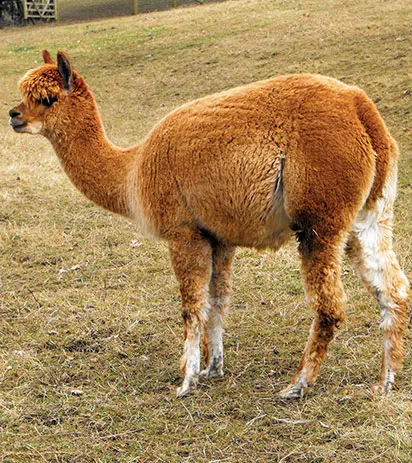
Despite the remarkable resemblance between these native animals of Peru, llamas and alpacas have a few differences. Several physical characteristics must be considered if we want to notice the difference between them. We can mention their facial features, size, height, and fur texture. Although, the variety goes far beyond their physical characteristics. Both South American camelids have different personalities and temperaments. So, you can expect many attributes for each of these beautiful animals. For all these reasons, alpacas and llamas don’t have any bonds in common. The llamas are cousins of Guanacos (and are more related to them). On the other side, the alpacas are more related to the Vicuñas (some researchers even claim that they descend from them).
Also, the main difference between a llama vs alpaca is their size (besides their wool). While the llama is the biggest (approx. 400 pounds weight) and 117 cm large, the alpaca has only 150 pounds weight, even reaching 180 pounds! and is approximately 90 cm large. Also, the wool of the first is rougher than the fine alpaca wool.
1. Face
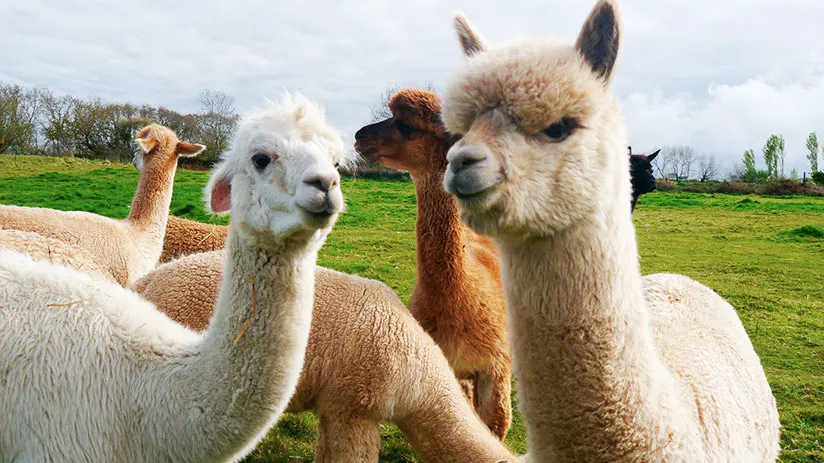
Usually, the llama has banana-shaped ears. A much longer face and snout. However, less hair. (Slightly rougher appearance). The alpaca’s ears are short and have pointed shapes. Also, they are much prettier and have more tender faces with thick fur and blunt noses. (Much softer).
2. Size
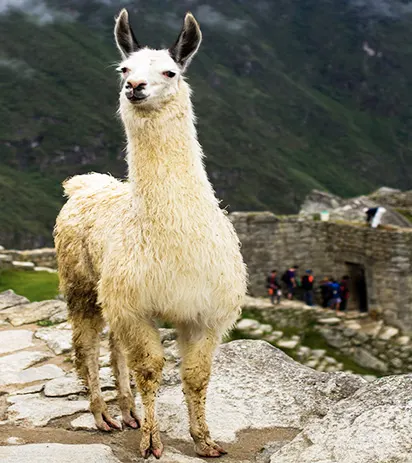
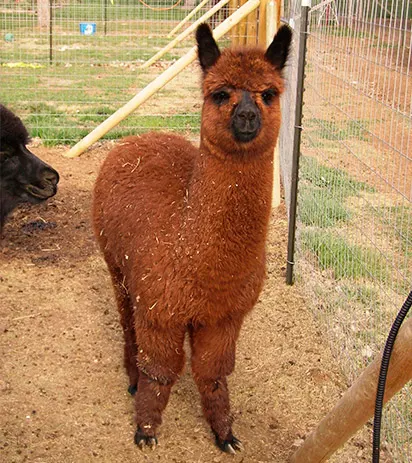
In this case, an average llama weighs 280 to 450 pounds. They are relatively larger than alpacas (106 to 117 centimeters extra). Instead, the alpacas have 106 to 185 pounds of weight. (48 to 84 kilograms). In this sense, alpacas are smaller than llamas (86 to 92 centimeters in height). You will notice this difference if you take any Machu Picchu tours. Since you will find alpacas and llamas grazing together in the green areas of the citadel.
3. Wool
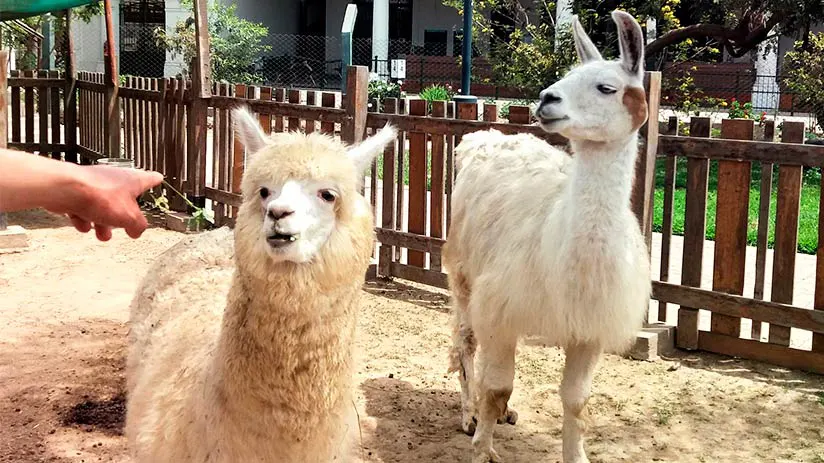
Llamas’ wool is much thicker, and it is not usually suitable for garment production. Also, they don’t have. Instead, the alpacas offer much more profitable production of quality wool (Fine fiber). They have much more fleece in a wide variety of colors: white, black, brown, red, and light tones. Also, they have more hair on the head and body than llamas.
4. Color
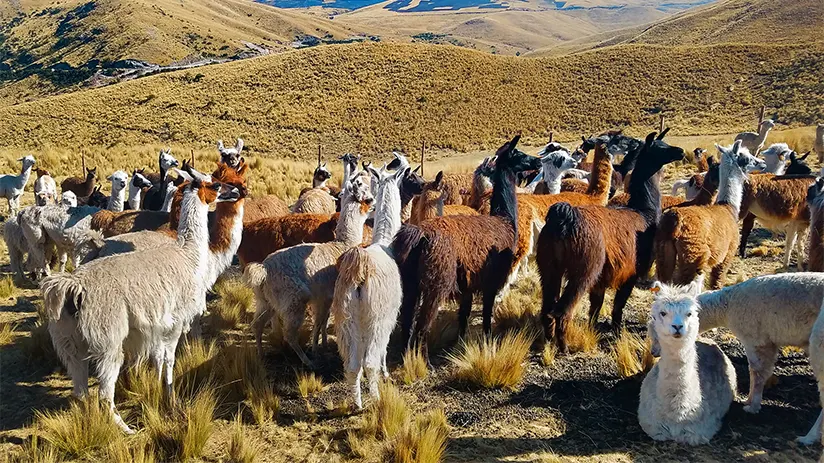
Usually, the coat of alpacas has a uniform color along the body. Their tonalities include 22 variants: black, white, pinto, roan, brown, gray, fawn, rose, and even red. The llama, on the other hand, has a coat that comes in various shades of various colors and spotted patterns along the entire body, like brown, beige, red, black, white, and grey. In this form, a llama can present more than two colors in its body. These various shades of both species contrast better with the green background of the Machu Picchu mountain. You can appreciate them better if you tour the famous Inca citadel.
5. Fiber
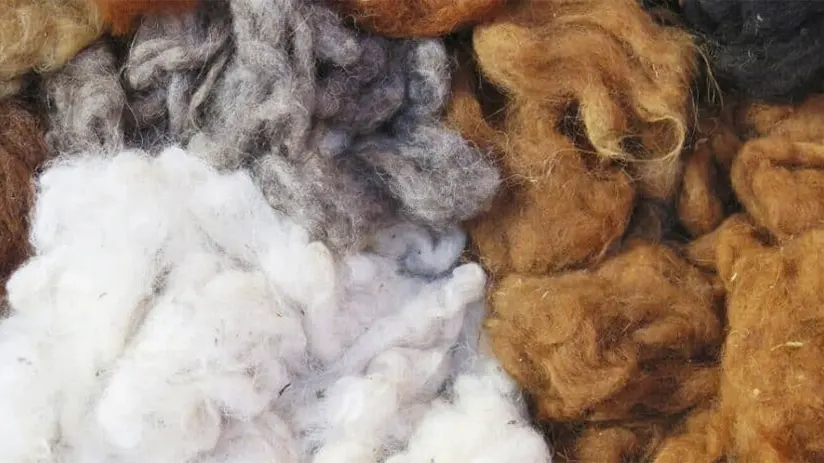
Both South American camelids had to cover themselves from the gelid weather conditions of the Andean highlands for years. In this form, they developed copious coats (wool) along the entire body to protect them from the cold. In this sense, the alpaca has fleece finer, thicker, and softer than the llama (around 18-30 microns). This fiber is excellent for producing clothes of the highest quality, like sweaters, jackets, caps, and scarves, among others. It highlights the variety “Huacaya,” which has a fluffy and crimpy fleece, similar to teddy bears.
There are other varieties, such as the “Suri” alpaca, which has the longest and brightest fleece. Instead, the llama has a fleece similar to human hair (50-65 microns), which is not adequate to produce clothes, except the fleece of a baby llama (under 30 microns). However, the shearing of a baby’s llama fiber, which needs more protection against the cold than others, is not common in Peru.
6. Personality
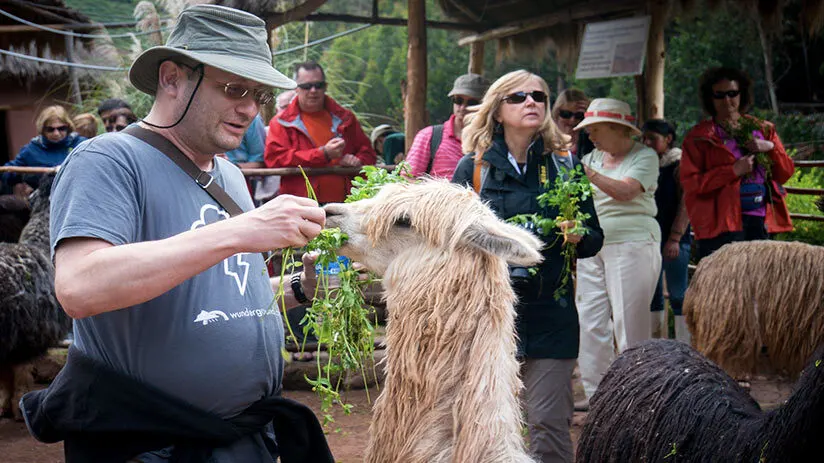
In this aspect, llamas are much more independent and robust than alpacas, with a well-defined character and a little less sociable than alpacas. Therefore, they are used as guards (for other farm animals) and pack animals. Alpacas, on the other hand, are herd animals and are much more friendly with humans but need more protection. By nature, they are more skittish but submissive and social, perfect to be considered pets.
Both South American camelids spit as a sign of defense or irritability. The spit can contain air with saliva from the mouth (more frequently used by alpacas), or it can contain contents from the stomach, regurgitated and stinky (in the case of the llamas)
Alpacas, being more sociable than llamas, spit less. Also, it is straightforward to recognize the nervousness or irritability of one of them. In those cases, walk away immediately!
7. Location
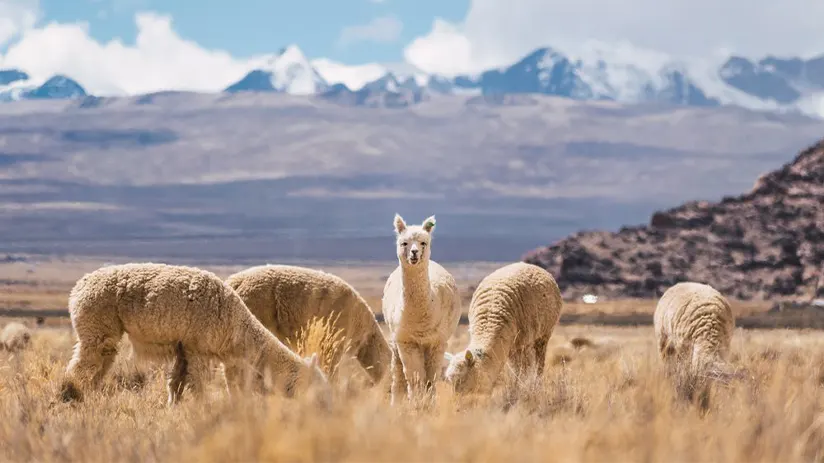
The coexistence area does not reflect the difference between both South American camelids. Since both specimens live in the mountainous regions of Cusco, Puno, and Arequipa. However, you don’t have to go far to see them. Suppose you stay in Cusco City and like to take photos. In that case, local women in traditional costumes, accompanied by these quaint animals, can take good pictures with you in every corner of the historic center. Of course, all of these for a small fee, “One picture, one dollar.”
You can also find them when you visit Machu Picchu and in almost all the Inca archaeological parks in Cusco. Take the Lares or Ausangate treks in the Cusco regions to see large herds in their natural environment.
8. Origins
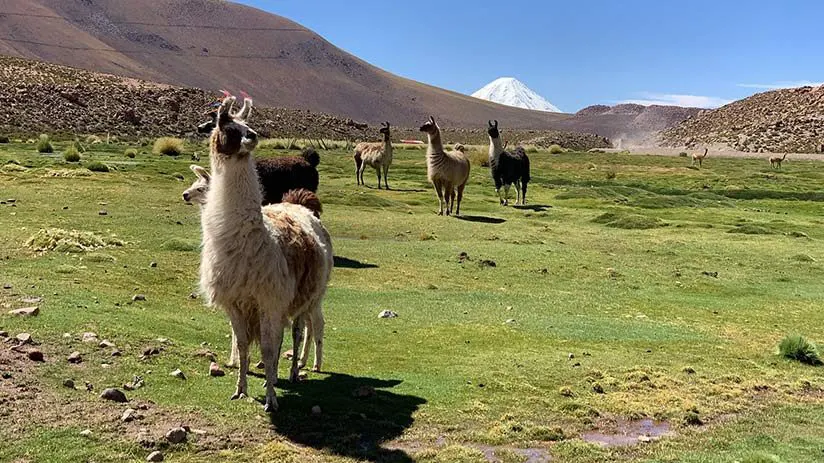
Although both can be considered South American camelids or Auchenids, alpacas and llamas have different origins. Llamas originated in the North American central plains more than 5000 years ago, and then they emigrated to the south of the continent due to the Great American Interchange. Instead, the alpacas descended from their South American cousins, the vicuñas, in about the same period.
9. Uses
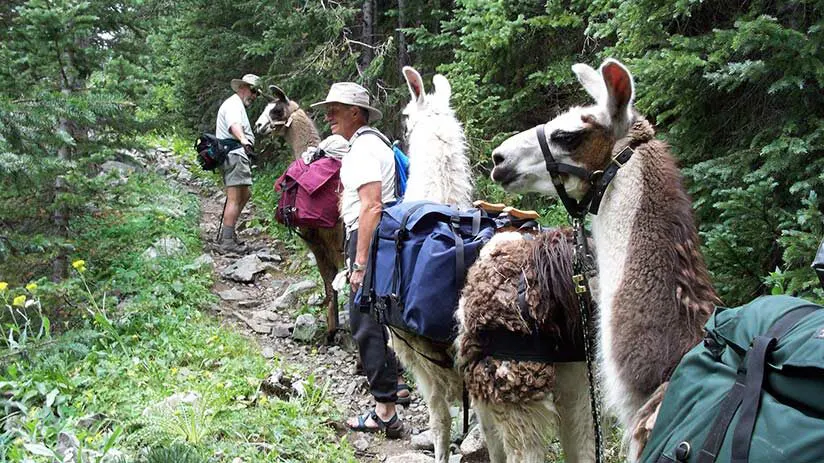
For more than 5000 years, alpacas have been bred for the explicit purpose of fiber rearing. These animals (the most attractive of the two) came to being used for their wool and meat. Believe it or not, alpaca meat is one of the most exclusive ingredients in Peru’s Novo Andean restaurants. Nowadays, many Peruvian companies have taken advantage of alpaca wool’s fineness and set up clothing companies.
In these, you can buy clothes made especially of fine wool. An alpaca garment will last forever and be a good memory of your trip to Peru. While llamas have been raised primarily as pack and guard animals. Since the Incas’ time, the llamas proved resistant and robust enough to carry weighty objects like large clay pots and copper and silver objects to faraway destinations. The llama can take a quarter of their own weight. Besides this, the strong personalities of llamas made them perfect animals to guard other animals like alpacas, guineas (Cuy), and other Andean barnyard animals.
10. Fabrics

The vast majority of alpacas in the world live in the magical country of Peru. And with the extensive biodiversity in Peru, it is not surprising that 80% of these camelids call our country home. One of the most precious goods is alpaca wool. The producers export it internationally to the whole world. And it is thanks to this that the textile industry flourishes within Peru. And when we talk about quality alpaca products, there is no better place than Peru. This is not to mention that by buying any of the available products, you will be benefiting some various Andean communities that breed them in captivity. These communities earn their living by raising different alpacas, either for their meat or their wool.
Fortunately, there are several types of wool fabrics. Next, you will see them.
A. Llama fabric
The llama has two main layers. The top layer is usually very rough and thick. This layer often protects the bottom layer, which is quite soft. So, this layer is beneficial for making rugs, ropes, and other decorations. In contrast, the bottom layer is often used for delicate, quality garments. However, since both layers are so different, they are frequently tough fabrics to process.
B. Guanaco fabric
Guanaco, like llama fabric, has two layers and is considered a higher quality fabric than llama fabric. This is because it is much simpler to treat and soft to the touch.
C. Alpaca fabric
Alpaca cloth is one of the most desired fabrics in the world market because it is thin, resistant, durable, thermal, soft, and hypoallergenic, among other characteristics.
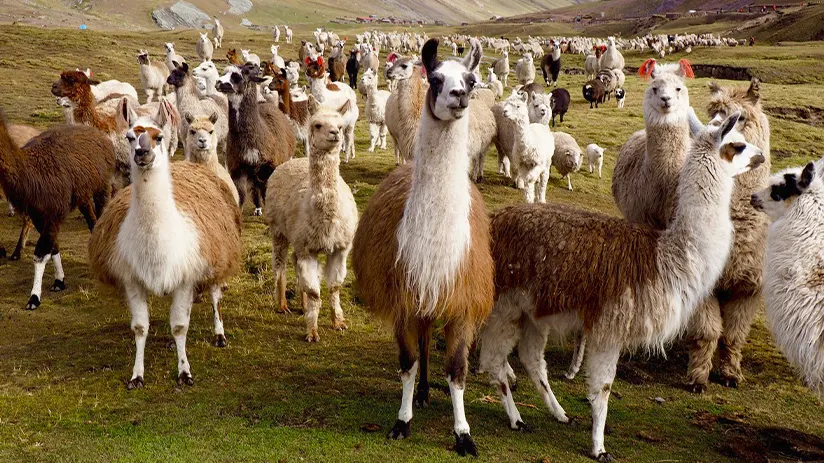
D. Baby alpaca fabric
This is a kind of alpaca cloth; it does not mean it comes from an infant alpaca. It has this name because it is the first shave of an alpaca. It is usually done when the alpaca is one year old or less. During this time, the alpaca’s coat is frequently finer. Therefore, this kind of wool is in high demand worldwide in the fashion industry.
E. Vicuña fabric
Vicuña cloth is recognized as one of the best in the world. Due to its pretty smooth, delicate, and of exceeding quality. It is even said that only the Inca royalty could wear the Vicuña cloth. It remains a rare fabric because it is a threatened species. Making it even more exclusive than the alpaca.
Frequently Ask Questions
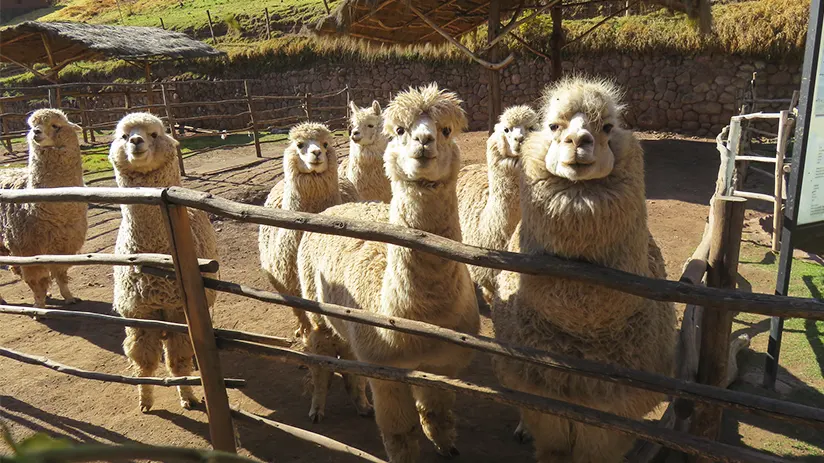
1. Where can I see alpacas and llamas in Peru?
Awanacancha is the most known South American camel farm located 23 km northeast of Cusco. There, you’ll enjoy 4 South American camel types, like the llamas, alpacas, guanacos, and vicunas. The enormous photos of each camelid species are well described by means of legends (English and Spanish). So it is not necessary to visit it with guides.
You will be able to see the evolutionary process of camelids throughout South America, specifically in Peru. In addition, you will be able to learn about the process of extracting wool from these animals, the elaboration of tissues, and the coloring. You will also be able to make sweaters, caps, and jackets, among other things. The best of all is that you will be able to interact directly with them (you will be able to feed them) since you are used to human contact.
The entrance is free! However, it is a moral obligation to leave a tip for the food of the camelids, as well as to pay for the maintenance of the farm and its veterinarians.
2. Alpacas and llamas: Can they mate?
The Hutaizo is the product of crossing an alpaca with a llama. These crosses should be avoided because Hutaizo have inferior wool quality to alpacas.
3. Which is better for raising alpacas or llamas?
As mentioned, llamas are more independent, bigger, and stronger than alpacas. They are also much less friendly and may spit at strangers when they invade their personal space. Therefore, llamas can be used as guardian animals for other farm animals (guinea pigs, chickens, pigs) and as pack animals.
Alpacas are more delicate and smaller but friendlier with strangers (That doesn’t mean they can’t spit if they feel threatened). They live in flocks, and their wool is of better quality. That’s why they are perfect for raising and keeping as pets.
4. Can both South American camelids coexist?
Alpacas and llamas can coexist in the same place. This is because llamas are guard animals to other farm animals like alpacas. In addition, they coexist peacefully in the Andes highlands of Cusco, Puno, and Arequipa, their natural habitat. The nature reserves in Peru, like Pampa Galeras, are excellent places to see these animals, especially in the Ayacucho region (center of Peru). You will pass by here if you take a bus from Cusco to Lima.
“ADVENTURE YOU SAY? ALPACA MY BAGS!”
There is no doubt that the differences between llamas and alpacas are minimal. But don’t worry; you will notice their notable differences once you appreciate them. Many things make each animal unique, from their height to their facial features. For this reason, spend your next vacation visiting Peru. The tremendous native animals of the country are the highlight of any visit. Together with the experts from Machu Travel Peru, we hope we have been of help. Remember, if you need to know about our different tours in Peru, you can consult with our team of qualified advisers. We will be waiting for your visit soon!
